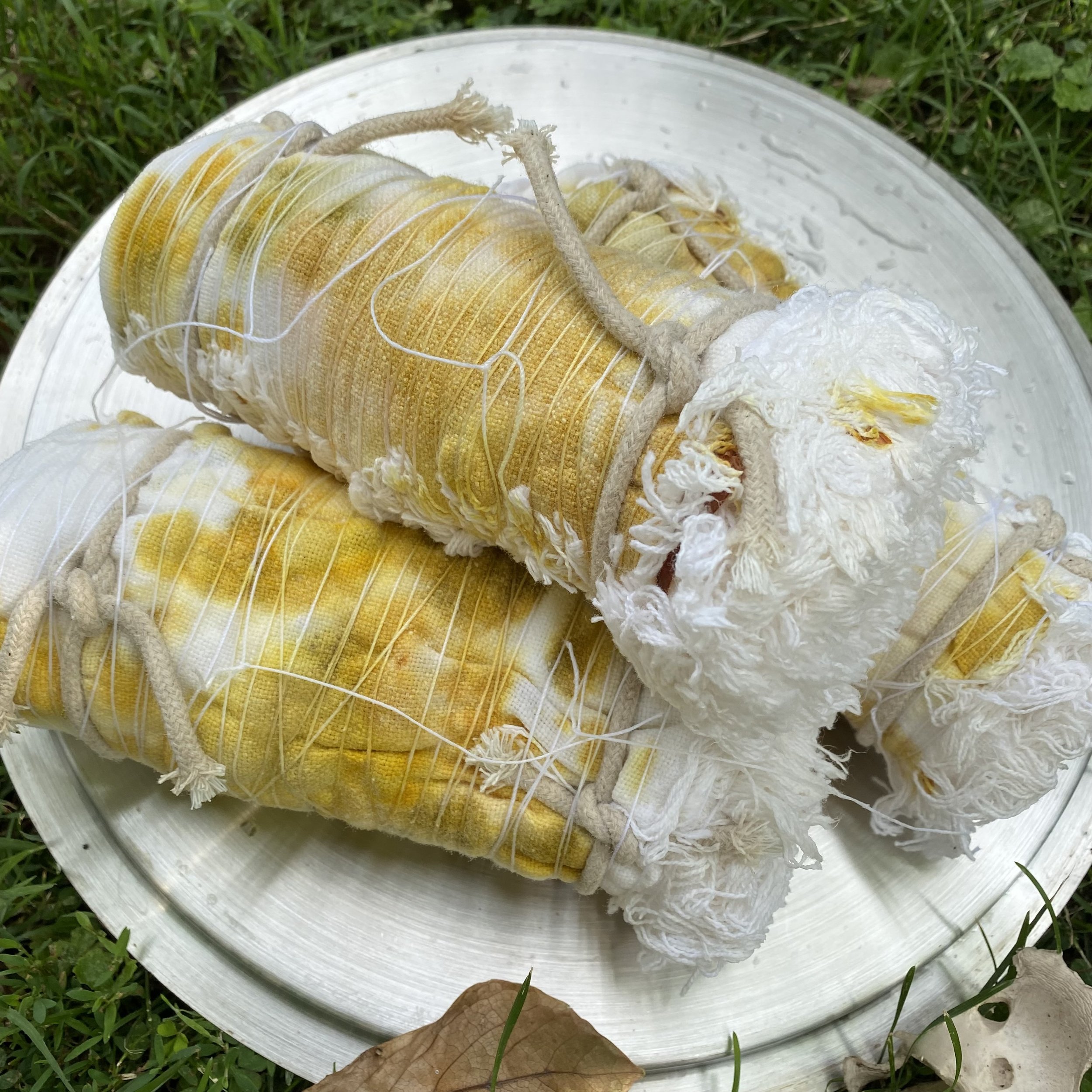Process
Each of our textiles is one-of-a-kind so while the process to make them differs accordingly,
below is a basic roadmap into the intricate process of dyeing with plants.
Grow.
My design process starts with a seed in the Spring. I grow most of the plants I use for my dyes. Others, I ethically forage. Some, I purchase raw or powdered materials. I spend a lot of time in the garden.. thinking, dreaming, listening.
Gather.
Depending on the plant, I am able to harvest from my garden as early as Spring and often collect to the very beginnings of Winter. But creating a wide range of natural colors requires me to move beyond my initial surroundings and into engagement with my wider community landscapes. It’s satisfying and grounding to return each year to the same roadsides, vacant lots, and unmanaged forests that I know grow color.
Prepare the Color.
Once my dye material is gathered, I add water and gently add heat. Sometimes I leave the stuffs in a glass jar in the sun for a few weeks. I also warm directly over a hot plate for an hour. With gentle heat and time, the color is coaxed out of the plant materials.
Scour.
Scouring is another word for deep cleaning the fabric. Instead of just throwing it in the washing machine, I boil water in a pot with some gentle soap and soda ash. The fabric sits in the pot for an hour while I stir occasionally to help get rid of any grease and dirt. Each piece is rinsed and ready for the next step.
Mordant.
Mordanting is a process that allows fabrics to successfully accept color from the dyes. A mordant binds to both the dye and the fabric so they can bond to each other more effectively. This is an extremely important step in natural dyeing that requires close attention.
Dye.
This is where the magic happens! The fabric is wetted and goes into the dye bath. How long I leave the fabric in depends on what color I want to achieve. It may stay in the bath for an hour up to three days. When I achieve the color I think is right, I remove the fabric, rinse and move on to the final wash.
Bundle. Pound. Ice.
There are other methods to dye with plants without using so much water and I love to experiment with pattern and design. I sometimes wrap and steam my materials to create a bundle dye. I also pound flowers directly into the fabric. In winter, when it snows, I love to add dye powder and let it melt on the fabrics to create beautiful, cosmic patterns.
Final Wash.
Each item is put through a final wash with a gentle soap and then, rinsed. When the water runs clear, I know that the process is complete. Depending on the item, it either gets ironed and stored or moves on to be sewn into the best version of itself.
Compost.
It’s important for me to see the whole life cycle of my artwork through, and there are many ways to reduce the harmful impacts to the environment that creating a textile makes. After creating the dye bath, all plant and food waste goes into the compost bin and is used for next year’s soil health. I also use only natural fibers including silk and cotton which biodegrade much faster than man-made fibers.








